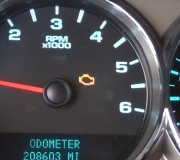Sure would help if you'd share those details. The next thing is you're going to have to do some troubleshooting when the problem occurs and that can be tricky, especially when there's no codes. Unlike GM fuel pumps that let you sit on the side of the road, Chrysler pumps rarely quit while they're running, so we'll rule out a pump problem for now.
My first question is was there a paper spacer or thin plastic rib molded to the end of the crank sensor? One of those is needed to set the air gap which is critical. I had one that I didn't use a spacer on and it caused intermittent stalling two weeks later.
You can use a scanner to view live data during a test drive and watch the cam and crank signals for "no" or "present" but those are the tricky ones. You have to watch whether the engine stalls, and THEN both signals go to "no", or whether one of them goes to "no", and THEN the engine stalls one or two seconds later. Many scanners have a record / playback feature that will record a few seconds of sensor information. You press the "record" button when the problem occurs, then you can play it back slowly, frame-by-frame, later to see if one signal dropped out first. Because that data passes through the scanner's memory, the recording actually starts a few seconds before you pressed the button. If both signals dropped out at the same time, you can tell by the MAP sensor's reading whether they were lost before or after the engine stopped running. In other words, did the signals quit because the engine stalled, which they will do, or did the engine stall because the signals quit?
Both sensors share a common feed wire and a common ground wire so if a splice is corroded, or if either sensor is shorting out the 5.0 volt feed, both signals will be lost at the same time. When the Engine Computer sees one signal, it knows the other one should be there too, and when it's not, it sets a code. When both are missing, the computer assumes that's a normal condition so it doesn't set a code. That would be like snubbing the engine with a manual transmission and clutch.
In the case of a shorted sensor or a wiring problem that affects both sensors, you would see "no" for both of them when you tried to restart the engine.
You can also watch the automatic shutdown (ASD) relay to see if it is listed as "on" or "hi". The computer turns that relay on when it receives the cam and crank signals. That relay powers the injectors, coil(s), alternator field, oxygen sensor heaters, and the fuel pump or pump relay.
If you can get the engine to stall and remain in a no-start condition, you can monitor the ASD relay with a test light or voltmeter if you don't have a scanner. It will turn on for one second when you turn the ignition switch to "run", then it will turn back off. If it does that, the relay is working and the Engine Computer has control over it. You might also hear the fuel pump run for that one second.
Next, the computer turns the relay on again during engine rotation, (cranking or running), and it knows when rotation is taking place by the pulses from the cam and crank signals. When either signal is not showing up, the ASD relay will remain off and there will be no spark AND the fuel pump won't run.
Watching that ASD relay with a test light can provide a lot of information but it's really best done with solid no-start conditions that give you enough time to make the tests. Very often the cam and crank sensors fail when they get warm, then work again after they cool down for a half hour. That's way more than enough time to perform the tests. If your engine is stalling while driving but it can be restarted right away, that suggests it's not a failing sensor, but more likely a corroded or loose connector pin going to one of those sensors, or a wire is rubbing through on a sharp metal bracket and grounding out intermittently. Look for things that are affected by the engine rocking sideways when it's under load. That will cause it to tug on wire harnesses and make them slide across the body sheet metal. If you lift up a harness and see the paint rubbed off the metal under it, there's a good chance the wire insulation is rubbed through too.
One other thing that seems to be showing more often is a wire harness to the oxygen sensors breaks free from its mounting clip and falls onto the hot exhaust pipe. Depending on which wire melts the insulation off first, you could get a Check Engine light, or it could cause stalling but that is because it could short that feed wire to the O2 sensor heaters, but that should blow a fuse and be a permanent no-start since that same fuse / relay / circuit feeds the injectors and coil.
Wednesday, December 21st, 2011 AT 4:28 AM



